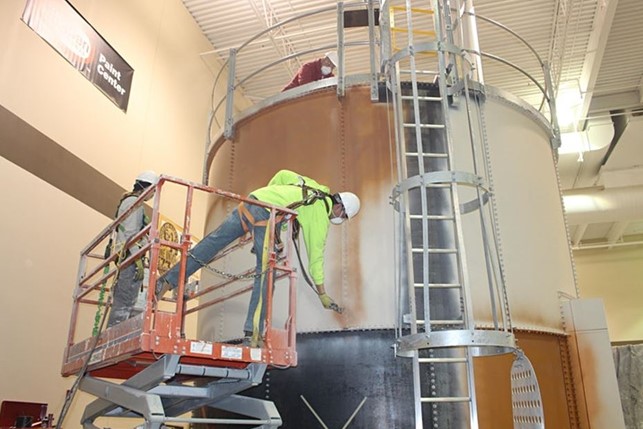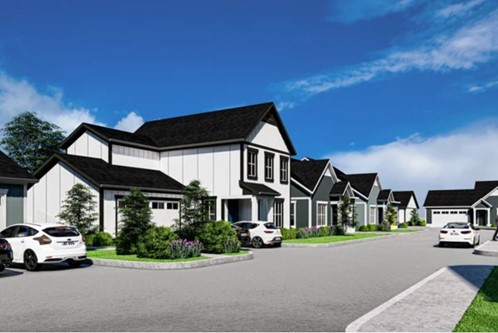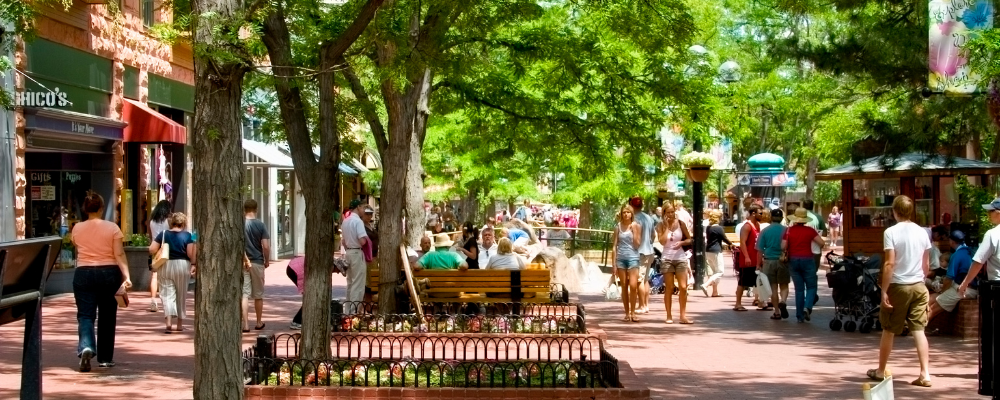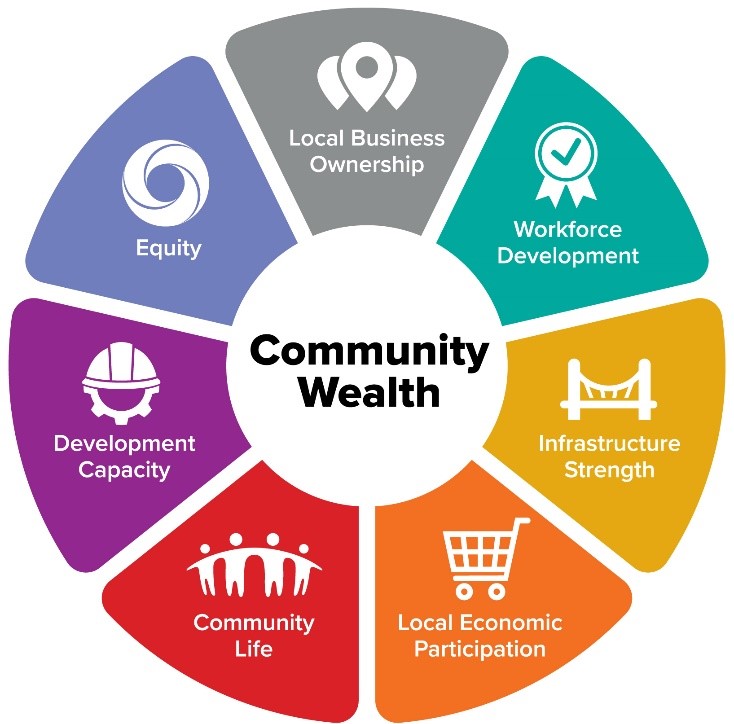
In recent discussions with community water system operators across Illinois, the Corrosion Illinois Network (CIN) – the TCDF’s flagship infrastructure resilience initiative – found that the biggest challenges communities often face in maintaining safe and reliable drinking water and wastewater treatment systems are identifying and planning for maintenance needs and securing project funding.
Both challenges will be addressed in an upcoming “lunch and learn” program to be presented by the CIN on March 9, 2022. The program, entitled “Water Solutions,” will dive deeply into the maintenance and repair challenges familiar to water system operators and the municipal officials charged with overseeing community water systems.
The program, to be held at the Painters District Council No. 30 facility in Aurora, will include informative presentations by corrosion industry leaders on issues that impact all drinking water and wastewater systems, including the high – often hidden – costs of corrosion and what communities can do to maintain their water system assets in good working order. Additionally, the program will provide guidance and insights on how proper maintenance planning can help significantly reduce operating costs – as well as how communities can prepare to successfully apply for water system project funding.
The program is the first in a series that the CIN plans to replicate across the state. According to TCDF executive director, Todd Dotson, “These issues – maintenance and project funding – are faced by all communities, no matter how big or small. The role of the CIN is to help give communities the upper hand on corrosion, with the tools to deal with it and, ultimately, to stop it before it starts.”
Dotson notes that developing resilient water infrastructure is key to helping communities reduce water utility costs and capital expenses, safeguard public health, and position themselves for growth.
Attendees at the Water Solutions event will also enjoy opportunities to network with colleagues over coffee and lunch. Additionally, the nationally accredited North Central Illinois Finishing Trades Institute – housed in the Aurora facility – will offer tours of their state-of-the-art training facility, where teaching staff utilize sophisticated instructional tools to train finishing trades workers in the highly specialized techniques of surface preparation and industrial coatings application on steel and concrete surfaces such as those found in water towers and bridges.
This event is free, but registration is required, and space is limited. For more information and to register, visit the event registration page.
Market insights you can use, delivered in a single bite.

Single Family Rental Market
Since the advent of FHA loans and other financing tools geared toward first-time home buyers, the pattern has been the same: young apartment-dwelling adults preparing for, or just starting, families of their own give up their rented apartments to purchase single-family homes offering less density, more space, and outdoor amenities. But for the millennial generation, this pattern has been disrupted by delays in family formation, high levels of student debt, skyrocketing home prices, and, most recently, pandemic uncertainty.
Increasingly, however, there is a new option for these home seekers. While single family rental (SFR) housing (that is, detached single family homes as well as duplexes, townhomes, and other “single address” attached forms) is hardly new, what is new is the level of organization and formalization that has entered this market segment and begun to attract burgeoning interest from many sides, including tenant prospects, residential developers, and institutional investors. With this has come a new generation of so-called “purpose-built” SFR communities – that is, planned developments offering consistent design and branding, centralized leasing, and high-quality units in neighborhood-style developments complete with sought after community amenities. In short, all the trappings of a high caliber for-sale development, but consisting entirely of single family homes for rent.
Need, suitability, and convenience are primary drivers of this growing market segment. Older millennials who need more space as they start families but who aren’t yet ready or able to purchase a home represent a major target market. As do downsizing baby boomers, who like the flexibility of maintenance-free rental living – especially when single level homeplans are an option – but who do not want to move into a multifamily apartment building.
The pandemic has also had an impact – both directly and indirectly – on the SFR segment, simultaneously spurring a desire for more space (for home officing and schooling, as well as simply to put more space between oneself and one’s neighbors) and depleting stocks of existing homes while driving the costs of new home construction (and new home prices) higher. And now, particularly with mortgage rates on the rise and continued tightness in the for-sale market, the SFR segment is poised to become an increasingly popular housing option.
Nationally, SFR homes represent just five percent of all single-family home starts. However, that percentage has been trending upward since the Great Recession. The segment is also attracting increasing interest from developers and institutional investors such as Toll Brothers, Crescent Communities, Blackstone, and JLL.
The major national homebuilder, D.R. Horton, has also invested heavily in the SFR market and, according to a recent CoStar article, is aggressively ramping up its rental business – both in the multifamily and SFR segments. According to David Auld, the company’s CEO, the ramp-up will continue. “Our goal is to deliver more homes because the demand is there,” he said. “When we look at the rental platform, the ability to scale that up and the segment that’s going to create, it’s going to be a real business all on its own.”
In the Chicago market, purpose-built SFR communities are still a rarity, but developer investment is growing along with consumer interest. Several rental townhome developments have recently been built. And just last month, Wisconsin-based Continental Properties broke ground on the 149-unit Avanterra Wolf’s Crossing detached single family home development in Oswego.

What is the community wealth building approach?
Community wealth building is an approach to economic development that strengthens communities while fostering inclusive growth. This approach leverages assets that already exist within a community to create new forms of shared prosperity. Rather than relying on expensive incentives designed to entice outside corporate entities (which may also send profits back to shareholders and distant corporate offices), community wealth building aims to create a resilient infrastructure of locally controlled businesses, powerful and responsive anchor institutions (such as schools, hospitals, and cultural institutions), and new vehicles for driving local economic opportunity.
How do the organized construction trades help build wealth for Illinois communities? Through their operations, business structures, employment practices, and economic impacts, the organized construction trades help build community wealth in many ways.

Local Business Ownership
The vast majority of organized construction and contracting firms are place-based small businesses with deep roots in the communities where they were formed. Many are passed down through generations of family ownership. In this way, they provide stable local employment, tax revenues, and other benefits to communities.
Workforce Development
Through apprenticeship and pre-apprenticeship programs, the organized construction trades provide highly valuable training and life skills education that give students -lifelong skills and expertise, leading to career advancement and good, secure employment.
Infrastructure Strength
Strong water, electric, transportation, and other infrastructure systems are vital to community economic growth as well as public health and safety. The organized construction trades deploy the most advanced training, materials, and techniques to keep community infrastructure sound and make it possible for communities to grow.
Local Economic Participation
The family-supporting wages and healthcare, retirement, and other vital benefits that workers earn in the organized construction trades bring economic security to these workers and their families. Union construction workers rely far less on public assistance than their non-union counterparts and have more disposable income to spend in their communities, supporting local businesses and helping to increase the capacity of municipalities to provide needed services to residents and businesses.
Community Life
Workers and employers in the organized construction trades are often actively involved in the life of their communities. Their participation in local government, community organizations, and other civic activities helps to increase community vitality and hometown pride.
Development Capacity
The organized construction trades represent a ready force of highly skilled and experienced crews fully prepared and equipped to handle all types of development projects. These crews make it possible to stand up high-quality buildings and infrastructure that generate revenue and jobs – and do so on time and on budget.
Equity
The organized construction trades are working to help level the playing field for minorities and other traditionally underserved populations. All workers within the organized construction trades are paid a fair and family-supporting wage and have access to vital benefits. Training and employment opportunities offered by the organized construction trades help low-income communities close opportunity gaps and break the cycle of poverty by providing career ladders, entrepreneurial opportunities, and other means of advancement.
Learn More
To learn more about community wealth building, watch Community Wealth Building in the Age of Recovery, our 2020 virtual forum featuring an all-star lineup of community wealth building experts.
Download an enhanced PDF of this article with tips on how communities can harness the power of the organized construction trades to help build community wealth here.